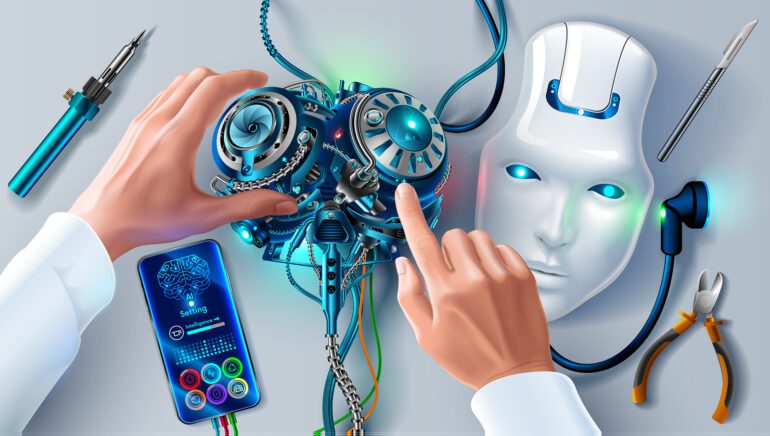- Goldman Sachs projects the AI robotics market to reach $38 billion by 2035, a significant increase from its previous forecast.
- Robotics integration transforms operations in warehouses, manufacturing, and other sectors, presenting lucrative investment opportunities.
- Companies like Alibaba, Amazon, and Tesla are in charge of leveraging robotics for efficiency and innovation.
- Tech giants, including Nvidia, Microsoft, Intel, and OpenAI, invest heavily in robotics startups like Figure AI, aiming to revolutionize the labor market.
- Figure AI aims to integrate robotics across various sectors, promising to redefine workforce dynamics on a global scale.
Main AI News:
As the landscape of artificial intelligence (AI) evolves, robotics emerges as a pivotal trend reshaping various industries. Leveraging robotics, technology firms revolutionize warehouse logistics, manufacturing, and beyond.
Goldman Sachs, the renowned investment bank, recently unveiled a compelling report forecasting the burgeoning market of humanoid robots. Their projection? A staggering $38 billion by 2035, a substantial leap from the previous forecast of $6 billion just a year earlier.
This exponential growth underscores the rapid advancements in AI, propelling significant shifts in market dynamics. Businesses strategically integrate robotics to optimize operations, presenting lucrative opportunities for savvy investors seeking exposure in the AI domain.
Exploring the Role of Robotics in Business Operations
Robotic applications span a wide array of industries, with warehouses and fulfillment centers emerging as primary beneficiaries. Companies adopt robotics not only to streamline logistics but also to disrupt traditional labor paradigms. The prospect of automating mundane tasks and potentially replacing human workers entices many businesses.
Humanoid robots, for instance, demonstrate remarkable versatility. From household chores to hazardous environments, these robots showcase diverse capabilities. Such innovations pave the way for unprecedented efficiency and safety across various sectors.
Leading the Charge: Companies at the Forefront of Robotics Innovation
E-commerce giants Alibaba and Amazon stand as early adopters, revolutionizing warehouse operations with robotics integration. By synergizing human labor with robotic efficiency, these companies unlock immense potential for cost savings and operational scalability.
Tesla, renowned for its disruptive innovations, spearheads advancements in humanoid robotics. With ambitions to revolutionize manufacturing, Tesla unveils “Optimus” bots poised to enhance assembly line efficiency. Such initiatives underscore the transformative impact of robotics on labor dynamics.
Beyond Tesla, a consortium of tech behemoths, including Nvidia, Microsoft, Intel, and OpenAI, demonstrate unwavering commitment to robotics. Their recent $675 million investment in Figure AI, a robotics startup, underscores the industry’s collective vision. OpenAI’s involvement, coupled with its prior investment in Norway-based X1, signifies a strategic push into the humanoid robotics realm.
Figure AI’s ambitious mission transcends conventional boundaries, aiming to revolutionize the $42 trillion labor market. From manual labor environments to household assistance and elder care, the integration of robotics promises to redefine workforce dynamics on a global scale.
Conclusion:
The projected growth of the AI robotics market to $38 billion by 2035 signifies a paradigm shift in various industries. Companies leveraging robotics stand to gain operational efficiencies and cost savings, while investors have ample opportunities to capitalize on this burgeoning market. With transformative innovations on the horizon, strategic investments in robotics herald a new era of technological advancement and economic prosperity.

